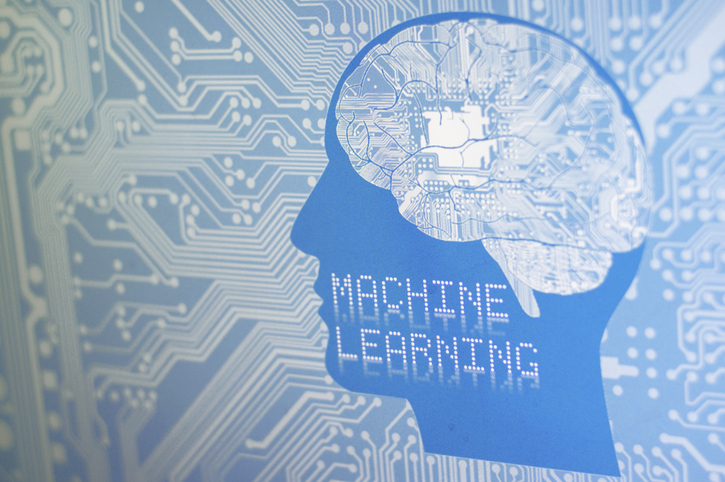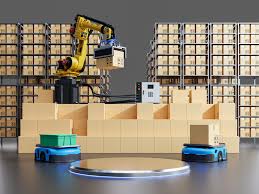Artificial Intelligence (AI) and large language models (LLMs) are increasingly being integrated into industrial robotics, revolutionizing the manufacturing industry. AI algorithms can analyze vast amounts of data and identify patterns to optimize robot performance. LLMs, such as OpenAI's GPT-3 and Microsoft's ChatGPT, are capable of understanding and generating human-like responses, making them ideal for enhancing communication between humans and robots.
The integration of LLMs in industrial robotics can improve efficiency by reducing the time it takes to program and operate robots. With LLMs, robots can understand and respond to human commands in real-time. Additionally, LLMs can be used to generate reports and data visualizations, providing insights into the manufacturing process and helping companies identify areas for improvement.
LLMs can also increase flexibility by allowing robots to adapt to changing manufacturing processes and requirements. However, clear and concise language is necessary to communicate with robots effectively. Companies also need to invest in rigorous testing and quality control processes to ensure that their robots meet safety standards and operate reliably.
Many robotics companies are already using AI and LLMs to enhance their products. For example, Mecademic, a Canadian robotic arm manufacturer, has integrated AI algorithms into its products to optimize their performance and make them more flexible. Similarly, ABB, a Swiss-Swedish multinational robotics company, has partnered with IBM to develop an AI-powered robotic inspection system.

Kuka has developed an intelligent control system called Kuka AIVI (Advanced Intelligent Vision), which uses AI algorithms to enable robots to perceive and interact with their environment in a more intelligent and flexible way.
Kuka AIVI uses advanced computer vision algorithms to enable robots to recognize and locate objects in their environment, even in complex and unstructured environments. The system also incorporates machine learning algorithms, which allow the robot to learn from its experiences and adapt its behavior to different situations. This enables the robot to perform tasks such as sorting, picking, and placing objects with greater accuracy and efficiency.
Microsoft and OpenAI are also partnering to create a language model for industrial robotics that can assist human operators in programming and controlling robots using natural language. The system will understand and respond to natural language commands, allowing operators to control robots using simple and intuitive language. This will reduce the need for specialized training and programming skills, making it easier for workers to operate and program robots.
Artificial Intelligence (AI) has transformed the industrial robotics industry by providing more efficient and accurate manufacturing, logistics, and assembly processes. AI-powered robots are capable of making independent decisions, adapting to changing conditions, and performing complex tasks with high precision and efficiency.
Here are some examples of how AI is being used in industrial robotics:
Enhanced Robotics Process Automation (RPA)
Robotic process automation (RPA) automates repetitive and tedious tasks using software robots. The integration of AI in RPA has led to the development of intelligent robots that learn from their environment, adapt to changing conditions, and perform complex tasks, resulting in higher productivity and efficiency. AI providers such as UiPath and Automation Anywhere have transformed the RPA landscape, enabling businesses to leverage automation in their operations. Chatbots, a form of AI, can further enhance RPA's natural language processing (NLP) capabilities, enabling effective communication with humans.
Predictive Maintenance
Predictive maintenance, which predicts equipment failure before it occurs, relies on AI algorithms that analyze data from sensors and other sources to detect anomalies. This approach ensures that industrial robots can be maintained and serviced proactively, reducing downtime and increasing efficiency. AI providers such as IBM Watson and Microsoft Azure have revolutionized predictive maintenance by analyzing large amounts of data to identify patterns and trends. Additionally, machine learning algorithms, such as those offered by Google Cloud, enable predictive maintenance models to improve over time and adjust to new data.
Autonomous Robotics
Autonomous robotics refers to the use of AI to develop robots that can make decisions and operate independently without human intervention. These robots can operate in complex and dynamic environments, adapting to changing conditions and making decisions in real-time. AI providers such as Nvidia and Intel have transformed autonomous robotics by enabling real-time data processing and machine learning. Additionally, language models such as GPT-3 and BERT, provided by OpenAI and Google, respectively, enable robots to understand and respond to natural language.

Quality Control
Quality control is another area where AI has made significant strides. AI algorithms can analyze data from sensors and other sources to detect defects and anomalies in products and processes. This approach ensures that products and processes meet certain quality standards. AI providers such as Amazon Web Services and SAP offer advanced analytics solutions that can detect even the smallest defects and anomalies. Additionally, image recognition algorithms, such as those provided by Microsoft Azure, enable robots to identify and sort products accurately.
AI providers have transformed the industrial robotics industry by enabling enhanced RPA, predictive maintenance, autonomous robotics, and quality control. AI providers such as UiPath, Automation Anywhere, IBM Watson, Microsoft Azure, Nvidia, Intel, OpenAI, Google, Amazon Web Services, SAP, and Microsoft Azure offer powerful AI solutions that can improve automation processes across different industries. As AI technology continues to evolve, we can expect to see even more innovative applications of AI in industrial robotics.

